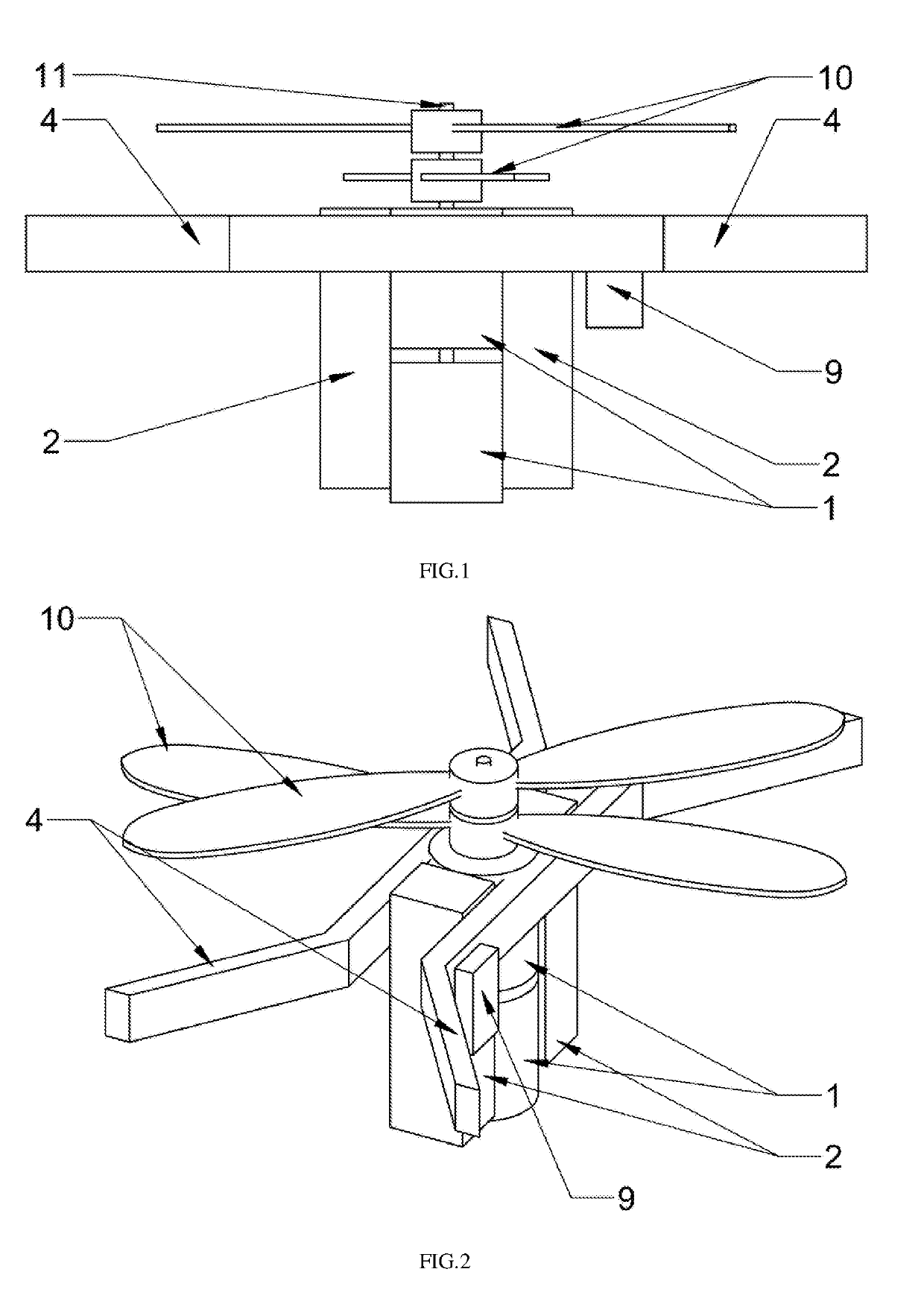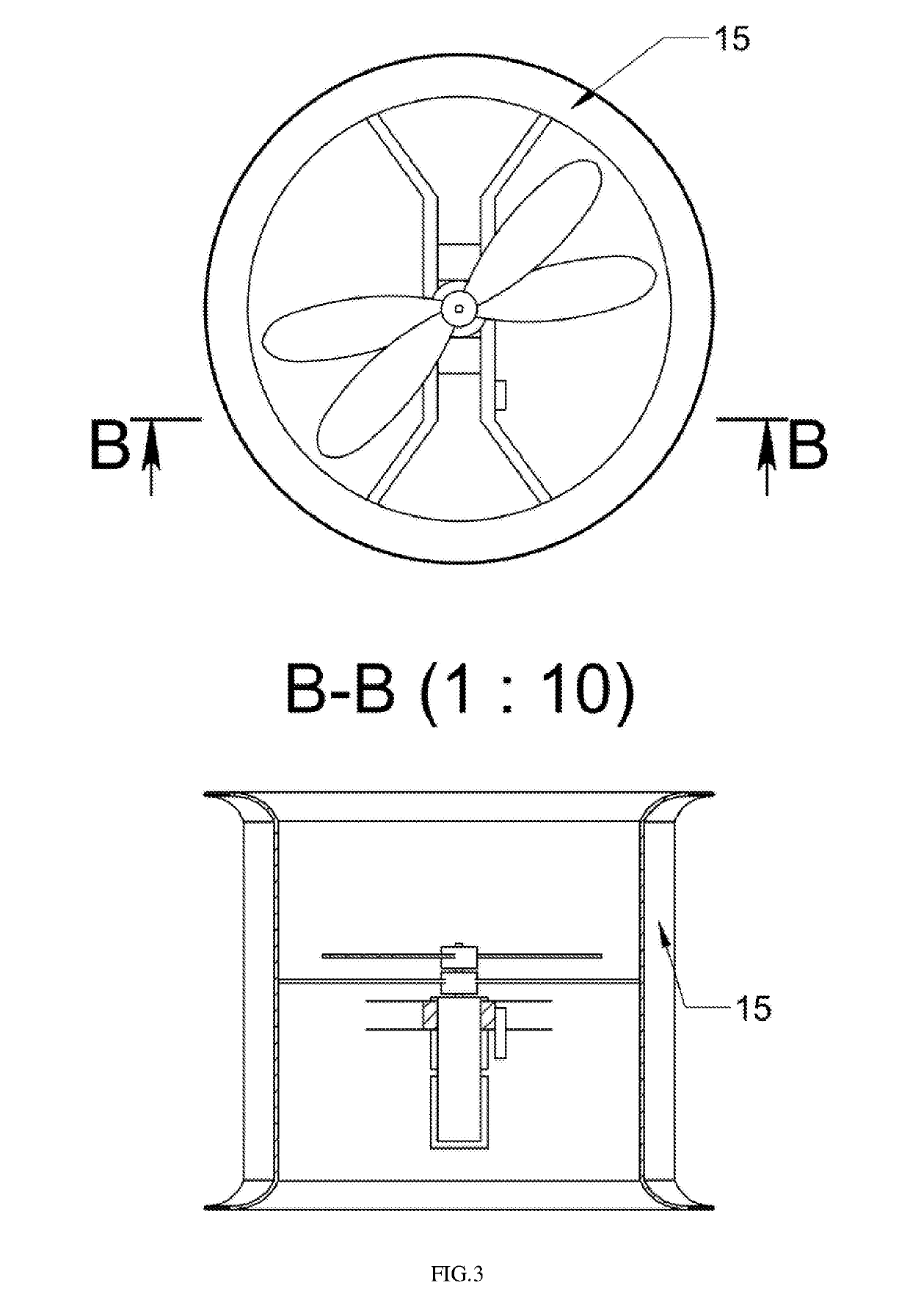Vertical take-off and landing aircraft
- Summary
- Abstract
- Description
- Claims
- Application Information
AI Technical Summary
Benefits of technology
Problems solved by technology
Method used
Image
Examples
embodiment 1
[0111]According to the embodiment 1, the engine unit comprises one or more electric engines arranged in-line, with horizontally rotating propellers. The engines are supplied from one power supply source or a group of power supply sources located directly on the engine support structures and located within an airstream produced the at least one horizontally rotatable propeller of this engine unit. Ancillary power supply sources located beyond the engine unit, may be used; they supply several engine units at once, all the engine units cannot be supplied from one power supply source. It is possible to install the ancillary power supply source inside the hollow airframe elements, in the unoccupied space between the propellers, above and under the engine units.
[0112]In one of the non-limiting embodiments of the present technology, installation of power supply source in the unoccupied space between the propellers of the section is used.
[0113]Each of the engine units comprises an individua...
embodiment 2
[0119]According to the embodiment 2, the engine unit (3) comprises one or more pneumatic engines, arranged in-line, with horizontally rotatable propellers (10) attached and downward exhaust pipe.
[0120]Each pneumatic engine is supplied from a compressor (8), installed in the central section of the flying vehicle, through the piping and system of electrically driven valves, regulating the flow of compressed gas to the pneumatic engines and receiving signals from the distributed control system via the onboard information network. The compressor (8) is a combustion engine or a turbocharged unit with the air compression system, supplied with the fuel from the tank located above the compressor and attached to the compressor body. For temporary redundancy the compressor may comprise a pneumatic accumulator attached to the compressor body, designed for temporary power supply to engines, if the main compressor fails. Switching from the main compressor to the pneumatic accumulator is automati...
PUM
 Login to View More
Login to View More Abstract
Description
Claims
Application Information
 Login to View More
Login to View More - R&D
- Intellectual Property
- Life Sciences
- Materials
- Tech Scout
- Unparalleled Data Quality
- Higher Quality Content
- 60% Fewer Hallucinations
Browse by: Latest US Patents, China's latest patents, Technical Efficacy Thesaurus, Application Domain, Technology Topic, Popular Technical Reports.
© 2025 PatSnap. All rights reserved.Legal|Privacy policy|Modern Slavery Act Transparency Statement|Sitemap|About US| Contact US: help@patsnap.com



